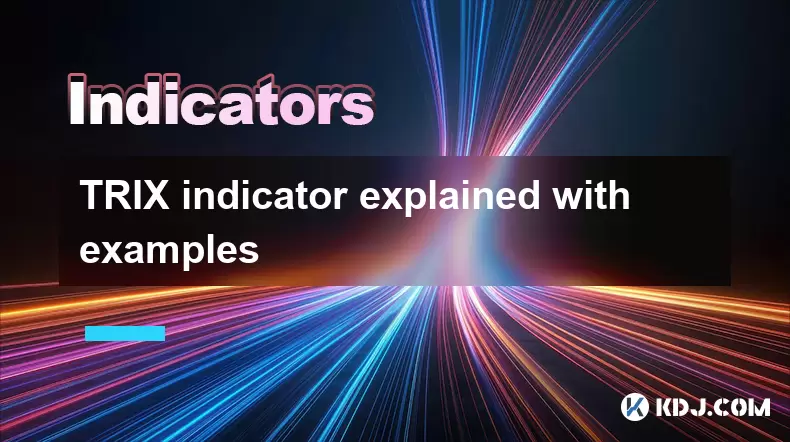-
 Bitcoin
Bitcoin $118,841.1054
1.02% -
 Ethereum
Ethereum $3,364.2689
7.44% -
 XRP
XRP $3.0337
3.93% -
 Tether USDt
Tether USDt $1.0004
0.04% -
 BNB
BNB $708.2059
2.49% -
 Solana
Solana $173.2385
5.74% -
 USDC
USDC $0.9999
-0.01% -
 Dogecoin
Dogecoin $0.2121
6.85% -
 TRON
TRON $0.3090
2.81% -
 Cardano
Cardano $0.7628
2.25% -
 Hyperliquid
Hyperliquid $46.8391
-2.08% -
 Stellar
Stellar $0.4537
0.15% -
 Sui
Sui $3.9529
-2.88% -
 Chainlink
Chainlink $16.6414
3.72% -
 Hedera
Hedera $0.2354
1.52% -
 Bitcoin Cash
Bitcoin Cash $499.1285
0.43% -
 Avalanche
Avalanche $22.6400
0.57% -
 Shiba Inu
Shiba Inu $0.0...01438
4.88% -
 UNUS SED LEO
UNUS SED LEO $8.8507
-0.64% -
 Toncoin
Toncoin $3.1498
2.35% -
 Litecoin
Litecoin $97.4954
1.21% -
 Polkadot
Polkadot $4.1541
1.50% -
 Monero
Monero $331.4406
-1.03% -
 Pepe
Pepe $0.0...01350
5.24% -
 Uniswap
Uniswap $8.9103
-5.01% -
 Bitget Token
Bitget Token $4.7540
4.51% -
 Dai
Dai $0.9999
-0.02% -
 Ethena USDe
Ethena USDe $1.0008
0.00% -
 Aave
Aave $322.3328
-1.63% -
 Bittensor
Bittensor $431.8026
-0.50%
TRIX indicator explained with examples
The TRIX indicator, a triple-smoothed momentum oscillator, helps cryptocurrency traders spot trend reversals and filter market noise for clearer trading signals.
Jul 17, 2025 at 07:28 am

What is the TRIX Indicator?
The TRIX indicator, short for Triple Exponential Average, is a momentum oscillator used in technical analysis to identify oversold and overbought conditions, as well as potential trend reversals. It is particularly popular among cryptocurrency traders due to its ability to filter out market noise and provide clearer signals compared to other oscillators.
The TRIX indicator calculates the rate of change of a triple exponentially smoothed moving average. By smoothing the moving average three times, it reduces volatility and provides more reliable trading signals. The result is plotted as a single line that oscillates around a zero line.
Key Concept: A rising TRIX line indicates increasing momentum, while a falling TRIX line suggests weakening momentum.
How to Calculate the TRIX Indicator
To understand how the TRIX indicator works under the hood, it's essential to break down the calculation steps:
- Calculate a single exponential moving average (EMA) of the closing prices over a specified period (usually 14 or 15).
- Smooth this EMA again using another EMA of the same length.
- Apply a third EMA to further smooth the data.
- Compute the percentage difference between today’s and yesterday’s triple-smoothed EMA values.
This final percentage value becomes the TRIX line that appears on your chart.
Important Detail: Most charting platforms like TradingView or Binance’s native tools automatically calculate and display TRIX, so manual computation isn't necessary unless you're building your own trading algorithm.
Interpreting TRIX Signals in Cryptocurrency Trading
In the context of cryptocurrency markets, where price swings are frequent and often exaggerated, the TRIX indicator can be an effective tool for filtering false signals.
- Zero Line Crossovers: When the TRIX line crosses above the zero line, it suggests a bullish trend. Conversely, when it crosses below zero, it signals bearish momentum.
- Signal Line Crosses: Many traders add a signal line (a moving average of the TRIX line itself) to generate trade signals. A buy signal occurs when the TRIX line crosses above its signal line; a sell signal happens when it crosses below.
- Divergence Detection: If the price makes a new high but the TRIX does not, it could indicate a reversal — known as bearish divergence. Similarly, if the price makes a new low but TRIX doesn’t, that’s a bullish divergence.
Practical Tip: In crypto markets with high volatility, divergence should be confirmed with volume indicators or candlestick patterns before taking action.
Using TRIX in Combination with Other Indicators
While the TRIX indicator is powerful on its own, combining it with other technical tools enhances its reliability in cryptocurrency trading strategies.
- Moving Averages: Overlaying a 50-period or 200-period moving average helps determine the overall trend direction.
- Volume Indicators: Tools like On-Balance Volume (OBV) or Chaikin Money Flow (CMF) can confirm TRIX-generated signals.
- RSI or MACD: These can help identify overbought or oversold levels and provide additional confirmation for entries and exits.
Example Scenario: Suppose Bitcoin’s price is rising, but TRIX starts to decline from overbought territory while RSI also shows signs of topping out. This combination might suggest a strong likelihood of a pullback.
Real-World Example: TRIX Applied to Ethereum Price Chart
Let’s walk through a real-world example using Ethereum (ETH) on a 4-hour chart during a recent uptrend phase.
- Step 1: Apply the TRIX indicator with default settings (typically 14 periods).
- Step 2: Observe a clear crossover above the zero line, indicating strengthening bullish momentum.
- Step 3: Notice a subsequent bearish divergence forming as ETH makes a higher high but TRIX fails to do so.
- Step 4: Confirm the signal with RSI peaking near 70 and a bearish engulfing candle appearing shortly after.
Outcome: Traders who recognized the TRIX divergence and cross-checked with RSI had a timely exit point before a significant price drop occurred.
This kind of multi-indicator validation is crucial in volatile crypto markets where false signals are common.
Frequently Asked Questions (FAQ)
Q1: Can the TRIX indicator be used for intraday trading in cryptocurrencies?
Yes, the TRIX indicator is suitable for intraday trading, especially when combined with a signal line and volume confirmation. Shorter timeframes like 15-minute or 1-hour charts can yield actionable signals, though they may produce more false positives.
Q2: Is TRIX better than MACD for crypto trading?
Not necessarily. While both are momentum-based indicators, TRIX filters out more noise due to triple smoothing, which can be beneficial in highly volatile crypto environments. However, MACD is more widely understood and may offer better entry/exit timing in trending markets.
Q3: How do I set up TRIX on Binance or TradingView?
On TradingView, click the "Indicators" button, search for "TRIX", and apply it to your chart. On Binance, navigate to the chart settings, go to "Indicators", and select TRIX from the list. You can adjust the period and enable a signal line for enhanced clarity.
Q4: Does TRIX work well with altcoins?
Yes, TRIX can be applied to any cryptocurrency, including altcoins. However, due to their typically lower liquidity and higher volatility, altcoin traders should use wider stop-loss levels and combine TRIX with other tools for better accuracy.
Disclaimer:info@kdj.com
The information provided is not trading advice. kdj.com does not assume any responsibility for any investments made based on the information provided in this article. Cryptocurrencies are highly volatile and it is highly recommended that you invest with caution after thorough research!
If you believe that the content used on this website infringes your copyright, please contact us immediately (info@kdj.com) and we will delete it promptly.
- Coinbase's 'Base App': Your All-in-One Crypto Hub?
- 2025-07-17 12:30:13
- Raydium, RAY Repurchase, and Circulation: A Solana Ecosystem Powerhouse
- 2025-07-17 12:30:13
- California Dreamin' Web3: Coinbase, Ripple, and the Golden State's Crypto Embrace
- 2025-07-17 10:30:12
- Navigating the Base Ecosystem: Investment Targets and Strategic Restructuring
- 2025-07-17 10:50:12
- Whale Trading, Market Impact, and Cryptocurrency: Navigating the Waters
- 2025-07-17 10:50:12
- Trump, World Liberty Financial, and the WLFI Token: From Locked to Listed?
- 2025-07-17 10:55:12
Related knowledge

Advanced RSI strategies for crypto
Jul 13,2025 at 11:01am
Understanding the Basics of RSI in Cryptocurrency TradingThe Relative Strength Index (RSI) is a momentum oscillator used to measure the speed and chan...

Crypto RSI for day trading
Jul 12,2025 at 11:14am
Understanding RSI in the Context of Cryptocurrency TradingThe Relative Strength Index (RSI) is a momentum oscillator used to measure the speed and cha...

Crypto RSI for scalping
Jul 12,2025 at 11:00pm
Understanding RSI in the Context of Crypto TradingThe Relative Strength Index (RSI) is a momentum oscillator widely used by traders to measure the spe...

What does an RSI of 30 mean in crypto
Jul 15,2025 at 07:07pm
Understanding RSI in Cryptocurrency TradingRelative Strength Index (RSI) is a momentum oscillator widely used in cryptocurrency trading to measure the...

What does an RSI of 70 mean in crypto
Jul 13,2025 at 06:07pm
Understanding the RSI Indicator in Cryptocurrency TradingThe Relative Strength Index (RSI) is a widely used technical analysis tool that helps traders...

Does RSI work in a bear market for crypto
Jul 16,2025 at 01:36pm
Understanding RSI in Cryptocurrency TradingThe Relative Strength Index (RSI) is a momentum oscillator used by traders to measure the speed and change ...

Advanced RSI strategies for crypto
Jul 13,2025 at 11:01am
Understanding the Basics of RSI in Cryptocurrency TradingThe Relative Strength Index (RSI) is a momentum oscillator used to measure the speed and chan...

Crypto RSI for day trading
Jul 12,2025 at 11:14am
Understanding RSI in the Context of Cryptocurrency TradingThe Relative Strength Index (RSI) is a momentum oscillator used to measure the speed and cha...

Crypto RSI for scalping
Jul 12,2025 at 11:00pm
Understanding RSI in the Context of Crypto TradingThe Relative Strength Index (RSI) is a momentum oscillator widely used by traders to measure the spe...

What does an RSI of 30 mean in crypto
Jul 15,2025 at 07:07pm
Understanding RSI in Cryptocurrency TradingRelative Strength Index (RSI) is a momentum oscillator widely used in cryptocurrency trading to measure the...

What does an RSI of 70 mean in crypto
Jul 13,2025 at 06:07pm
Understanding the RSI Indicator in Cryptocurrency TradingThe Relative Strength Index (RSI) is a widely used technical analysis tool that helps traders...

Does RSI work in a bear market for crypto
Jul 16,2025 at 01:36pm
Understanding RSI in Cryptocurrency TradingThe Relative Strength Index (RSI) is a momentum oscillator used by traders to measure the speed and change ...
See all articles

























































































